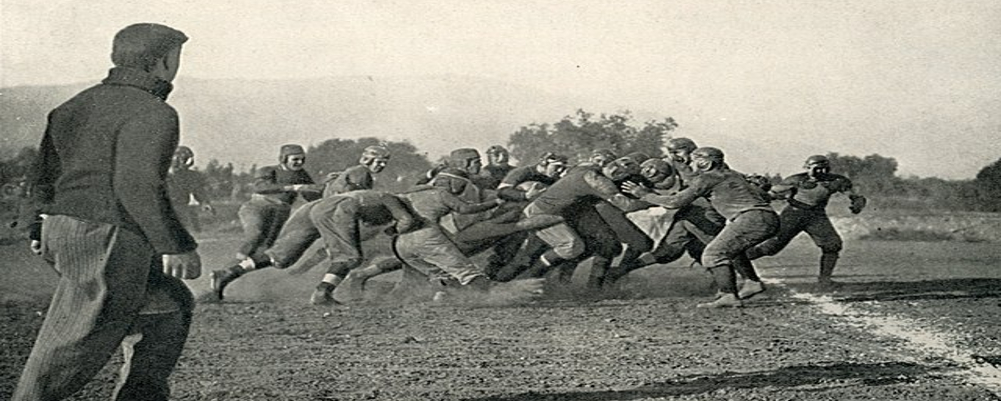Dominant Teams and Fierce Rivalries:
Multiple teams rose above the rest in 1941. The best may have been the University of Minnesota Golden Gophers. Minnesota, led by the Heisman Trophy-winning quarterback Bruce Smith, boasted an undefeated record (8-0) and a suffocating defense directed by head coach Bernie Bierman. The Gophers survived competitive games against Washington (14-6), Michigan (7-0), and Northwestern (8-7). Minnesota was ranked Number one in the AP poll and was a unanimous choice for the retroactive selectors to be the nation's Top Team of '41.
Texas, under the guidance of legendary coach Dana X. Bible, also enjoyed a winning season with a potent offense led by All-Americans: Malcolm Kutner (end), Guard Chal Daniel, Halfback Jack Crain, and Pete Layden at fullback. The Longhorns finished with an 8-1-1 campaign, their sole setback a 7-14 loss to TCU just before Thanksgiving.
Many considered these two teams, representing the Big Ten and Southwest Conferences, respectively, top contenders. Still, they were not alone in the ranks of the best in the nation.
Other contenders included the mighty Duke Blue Devils, who finished the regular season undefeated. Legendary head coach Wallace Wade led the team in his 11th season with the program.
Also at the top of the AP poll was the ever-present powerhouse Notre Dame Fighting Irish, under the first-year coach Frank Leahy, who took the Irish to an 8–0–1 record, as they outscored opponents by 189 to 64. They had a rising star in Quarterback Angelo Bertelli, who would eventually take home a significant award a few seasons later. The Irish stalemate with a 5-3-1 Army team at Yankee Stadium prevented ND from taking any claim to the mythical National title.
Grandaddy Flips Coasts
After the Japanese attacked Pearl Harbor, thrusting America into World War II depicts this notion. With the threat of a Japanese attack on the West Coast of the US, the Government decided to ask the Rose Bowl not to play in Pasadena. By December 16, Duke University invited the game and Oregon State to Duke's home stadium in Durham, North Carolina; after all, Western sites, such as Oregon, were eliminated as locations for the Rose Bowl Game to be played. Oregon accepted, and for the first time, the "Grand-daddy of them All" would be played in a place other than Pasadena, California.
In the heated contest, the Beavers rallied to score 13 points in the third quarter. Duke responded with another TD and a fourth-quarter safety to round out the final score of Oregon State 20, Duke 16. Those 16 points were the season's first ones the Beavers' opponents scored.
Other Bowl Games
Orange Bowl Miami, Fla.
1942
01/01/43
Alabama
37
Boston College
21
Sugar Bowl New Orleans, La.
1942
01/01/43
Tennessee
14
Tulsa
7
Cotton Bowl Dallas, Tex.
1942
01/01/43
Texas
14
Georgia Tech
7
Sun Bowl El Paso, Tex.
1942
01/01/43
Second Air Force
13
Hardin-Simmons
7
Summary of the Top Player Accolades{/b]
✦ Heisman Trophy: halfback Bruce Smith Minnesota. ,
✦ Maxwell Award: halfback Bill Dudley Virginia.
-Leading Rusher: Frank Sinkwich of Georgia with 1,103 rushing yards.
✦ Passing Leader: Bud Schwenk of Washington University in St. Louis with 1,457 passing yards,
✦ Leading Receiver: Hank Stanton of Arizona with 820 receiving yards.
✦ Top Scorer: Bill Dudley with 134 points.
[b]A Season of Change:
The events of December 7, 1941, with Japan's attack on Pearl Harbor, forever altered the landscape of American life, including college athletics. Many players soon enlisted in the military, putting their football careers on hold. The nation's focus shifted from the gridiron to the battlefields abroad. The 1941 college football season, despite its outstanding talent and thrilling matchups, would be remembered as a season overshadowed by the looming world war.
The legacy of the 1941 college football season lies not just in the exceptional players and undefeated teams but also in the context of a nation on the brink of war. It reminds us of the power of sports to bring people together, even during uncertain times. The 1941 college football season was a brief national pride and athletic excellence moment before the world stage took a dramatic turn.


